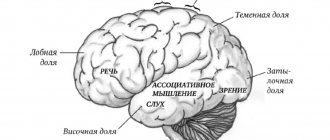There is such a thing as social perception, which translated from Latin (perceptio) means “perception”. In relation to the psychology of society, we consider how a person sees the situation and what conclusions he draws. And most importantly, psychologists note, what actions should be expected from this or that individual who belonged to a certain group of like-minded people.
Social perception is characterized by the following functions:
- Self-knowledge;
- Knowledge of the interlocutor, partner;
- Establishing contacts within the team in the process of joint activities;
- Establishing a positive microclimate.
Social perception studies behavior patterns between individuals with different levels of development, but belonging to the same society, collective. Behavioral reactions are formed on the basis of social stereotypes, knowledge of which explains communication patterns.
There are two aspects of social perception in the study of psychological compatibility processes. These are the following questions:
- Study of social and psychological characteristics of an individual subject and object of perception;
- Analysis of the mechanism of interpersonal communication.
In order to ensure knowledge and understanding of another person, as well as oneself in the process of communication, there are special mechanisms of social perception that allow one to make predictions regarding the actions of communication partners.
Mechanisms of social perception
The tools used by social perception ensure the establishment of communication between individuals and consist of the following concepts:
- Identification;
- Empathy;
- Attraction;
- Reflection;
- Stereotyping;
- Causal attribution.
The identification method consists in the fact that the psychologist tries to put himself in the place of the interlocutor. To get to know a person, you need to understand his scale of values, norms of behavior, habits and taste preferences. According to this method of social perception, a person behaves in the way that, in his opinion, his interlocutor might behave.
Empathy is empathy for another person. Copying the emotional mood of the interlocutor. Only by finding an emotional response can you get a correct idea of what is going on in the soul of your interlocutor.
Attraction (attraction) in the concept of social perception is considered as a special form of cognition of a partner with the formation of a stable feeling for him. This understanding may take the form of friendship or love.
Reflection is awareness of oneself in the eyes of the interlocutor. When conducting a conversation, a person seems to see himself from the partner’s side. What the other person thinks about him and what qualities he gives him. Self-knowledge in the concept of social perception is impossible without openness to other people.
Causal attribution from the words “cause” - cause and “attribute” - label. A person is endowed with qualities according to his actions. Social perception determines the following types of causal attribution:
- Personal – when the reason comes from the person who committed this or that act;
- Objective – if the cause of the action was the object (subject) towards which this or that action was directed;
- Circumstantial – the conditions under which a particular act was committed.
In the process of research, according to social perception, patterns were identified that influence the formation of causal attribution. As a rule, a person attributes success only to himself, and failure to others, or to circumstances that, alas, were not in his favor. When determining the severity of an action directed against a person, the victim ignores objective and detailed causal attribution, taking into account only the personal component. An important role in perception is played by a person’s attitude or information regarding the perceived subject. This was proven by Bodalev's experiment, which showed a photograph of the same person to two different social groups. Some said that before them was a notorious criminal, others identified him as the greatest scientist.
A social stereotype is the perception of an interlocutor based on personal life experience. If a person belongs to any social group, he is perceived as part of a certain community, with all its qualities. A clerk is perceived differently than a plumber. Social perception shares the following types of stereotypes:
- Ethnic;
- Professional;
- Gender;
- Age.
When people from different social groups communicate, contradictions may arise, which are smoothed out when solving common problems.
Halo effect
“Ivanov once took me across the road, which means he will be an excellent deputy.” “Sergeev only gets straight A’s, he couldn’t break the window with the ball.” These exaggerated examples are based on the so-called halo effect, which in psychology is a cognitive distortion in which individual positive signs become the basis for an overall assessment of a person. When someone seems attractive to us, we tend to consider him more successful, kind, empathetic, and friendly than an unattractive one.
The halo effect (halo effect) can also have another side, which is called the devil effect. It occurs when, of two suspects (attractive and unattractive), the unattractive one is more decisively accused of committing a crime.
Psychologist Edward Thorndike wrote about the halo effect in 1920 in his article “A Constant Error in Psychological Ratings.” He conducted a study and revealed the presence of this phenomenon. Later, various scientists conducted their experiments, which confirmed his theory. Thorndike originally coined the term in relation to people, but its use has expanded significantly, especially in the field of brand marketing, which we will discuss later.
In the original experiment, Thorndike asked two commanders to rate their soldiers in terms of physical qualities (neatness, voice, fitness, energy), intelligence, leadership skills, and personal qualities (reliability, loyalty, responsibility, dedication, cooperation). His goal was to see how ratings of one characteristic affected others. And there really was a direct relationship - those who received the highest ratings for physical characteristics were rated higher in other parameters.
Some more examples of the halo effect:
- The job seeker who seems more attractive gets the job.
- A laptop with a better design seems more functional than one with an understated design.
- People with good looks seem more intelligent.
- Juries have difficulty being convinced that a nice person is guilty of a crime (John Monahan Study, 1941).
It should be said that some researchers and scientists believe that the halo effect has reasonable grounds. For example, that intelligence and beauty are inherited. However, practice shows that this is not always the case.
A 2011 study by psychologists Moore, Philippou, and Perrett found that the halo effect may also affect opinions of intelligence. That is, if a person considers another person smart, he attributes other positive qualities to him: friendliness, sense of humor, leadership qualities. This experiment expands on the concept of the halo effect.
Halo effect in advertising
The term "halo effect" is used in marketing to explain the tendency of customers to buy certain products because of favorable experiences with other products manufactured by the same company.
The halo effect is also present in the field of brand marketing. The main effect is that the perceived positive properties of a particular item are transferred to the wider brand. A notable example is how the popularity of Apple's iPod sparked enthusiasm for the company's other products.
Another example is Subway's brand image as a "healthy" variety of fast food. Perceiving a restaurant as “healthy” causes consumers to underestimate the calorie content of its dishes.
Marketers use the halo effect to sell products and services. When a celebrity endorses a particular product, that person's positive evaluation can influence the perception of the product itself. True, there is one problem with stars: if they get into a scandal, this can also turn consumers away from this product and then we are dealing with the other side of the halo effect.
Designers often take advantage of this effect when they sacrifice simplicity and functionality for the sake of a beautiful image. True, this often does not work in the long term, because such a strategy damages the reputation. Apple technology has conquered the whole world, not least thanks to its simple design.
If you want to learn more about the halo effect, we recommend that you read a book on the topic: The Halo Effect...and Other Eight Illusions That Mislead Managers.
Effects of perception
Of course, the halo effect is not the only one when it comes to how others perceive a person. We all have some patterned inaccuracies. These effects occur for two different reasons:
- Behind them are some internal patterns of social perception.
- People see what is happening this way because in this society it is so accepted and so familiar to everyone.
The most well-known perceptual distortions are:
- False Consent Effect : This is the tendency to project your way of thinking onto other people. In other words, people tend to believe that others think the same way they do.
- Psychological Projection: A defense mechanism that people subconsciously use to cope with difficult feelings or emotions by attributing them to others. We assume that other people have the same qualities as ourselves.
- Actor-observer effect : the tendency to explain one’s own mistakes and miscalculations by the peculiarities of the situation, and the troubles happening to others by the negative qualities of their personality. Often manifests itself in relationships between drivers.
- Role effect : Role-driven behavior that we often mistake for personality traits. For example, we perceive a boss who rightly criticized poor work as an unpleasant person.
- In-group favoritism : This is the tendency to believe that members of one's own group are better, smarter, and fairer. The same effect works when a person is similar to us.
- Causal attribution effect : we often attribute situational motives to common behavior of people, and personal motives to non-standard behavior. We attribute our successes to ourselves, and our failures to the current situation. For other people's successes and failures, it's just the opposite.
- Authority effect : the opinion of an authoritative person seems more significant to us, even if he is not a professional in the field of interest to us.
- Primacy effect : the first information is overestimated in comparison with the subsequent one.
- Effect of physiognomic reduction : the conclusion about the presence of a psychological characteristic is made on the basis of appearance features.
- Expectation effect : when we expect a certain reaction from a person, we provoke him to it.
- Presumption of reciprocity : the tendency of a person to believe that "the other" treats him the way he treats the "other".
- Condescension effect : the boss exaggerates the positive traits of his subordinates and underestimates the negative ones.
- Hyper-demanding effect : the boss underestimates the positive traits of his subordinates and exaggerates the negative ones.
- Loser effect : a person who has failed, those around him begin to consider him a loser in all other matters.
- Effect of logical error : consists in the falsity of judgments about the constancy and close relationship of any personality qualities (for example, courtesy and good nature, kindness and empathy).
- Mean error effect : the tendency to soften judgments of another person's salient features toward the average.
- Superiority effect : people tend to overestimate the various qualities of those people who are superior to them in some important parameter for them.
As we can see, a person makes a huge number of mistakes when it comes to the perception of other people. However, remember that some cognitive distortions can also have positive consequences. There is no clear recipe for what is right and what is wrong. Sometimes delusions can lead us to success, and rigid rationality can turn others away from our society.
Did you like the article? Join our communities on social networks or our Telegram channel and don’t miss the release of new useful materials: TelegramVKontakteFacebook
We also recommend reading:
- Storytelling
- Barnum effect and Forer experiment
- Doctor Fox Effect
- Restorff effect
- Sleeper effect
- 7 cognitive distortions that prevent you from making good decisions
- 10 mind traps
- The effect of joining the majority
- Reverse effect
- Social perception
- Streisand effect
Key words:1Communications, 4Communications
Effects of social perception
Based on stereotypes, interpersonal perception is formed, which determines the following effects:
- Primacy;
- Novelty;
- Halo.
The primacy effect in social perception manifests itself upon first acquaintance. A person's assessment is based on information previously obtained.
The novelty effect begins to operate when completely new information appears that is considered the most important.
The halo effect manifests itself in the exaggeration of positive or, conversely, negative qualities of a partner. In this case, no other arguments or abilities are taken into account. In a word, “a master, he is a master in everything.”
To ensure a fairly accurate prediction of the situation of interpersonal perception, it is necessary to take into account the range of phenomena associated with various kinds of moments that distort the true picture of what is perceived. We are talking about “effects” that arise when people perceive each other: the projection effect, the average error effect, the “halo” effect (“halo effect”), the effect of novelty and primacy, as well as the effect, or phenomenon, of stereotyping.
Projection effect –
the ability of people to attribute their own merits to a pleasant interlocutor, and their own shortcomings to an unpleasant interlocutor, that is, to most clearly identify in others those traits that are clearly represented in themselves. According to Newcomb, this tendency is to a very large extent characteristic of representatives of the so-called authoritarian personality type and is almost not found in representatives of the democratic type.
Average error effect
– the tendency to soften assessments of the most striking features of another person towards the average.
Effect of logical fallacy
consists in the falsity of judgments about the constancy and close relationship of any personality qualities (for example, courtesy and good nature, kindness and empathy).
"Sequence Effect"
— the judgment about a person is most influenced by the information presented about him in the first place. Usually, someone who wants to harm a person, having learned something unworthy about him and without even checking the information, runs to tell the boss and his immediate circle. Making excuses and proving that everything was wrong against such an unfavorable background is much more difficult and futile.
The “advance” effect is very common.
- non-existent positive qualities are ascribed to a person, and when faced with his behavior that is inadequate to his imagination, they become disappointed and upset.
"halo" effect
– the effect of people’s perception of each other in conditions of information deficiency, when the perception of one person by another is significantly influenced by primary information about him, as a result of which he is perceived in a corresponding light - positive or negative.
The essence of the “halo effect” is the formation of a specific attitude towards the perceived person through the directed attribution of certain qualities to him: information received about a certain person is categorized in a certain way, namely, superimposed on the image that has already been created in advance. This pre-existing image acts as a “halo” that prevents one from seeing the actual features and manifestations of the object of perception.
The halo effect manifests itself when forming a first impression of a person in that a general favorable impression leads to positive evaluations of unknown qualities of the perceived person and, conversely, a general unfavorable impression contributes to the predominance of negative evaluations. Experimental studies have found that the halo effect is most pronounced when the perceiver has minimal information about the object of perception, as well as when judgments concern moral qualities. This tendency to obscure certain characteristics and highlight others plays the role of a kind of halo in the person's perception of a person. The “halo effect” is the influence of the general impression of a person on the perception and assessment of the private properties of his personality. If the group or the leader has an opinion about a person that he is very good, then his bad deed is regarded as an accident. And, conversely, if everyone considers a person bad, then the good deed of this person is also considered an accident. This effect very often interferes with the adequate perception of people and creates conditions under which capable and bright individuals are completely unable to work in a given group, because the good is not noticed, and the bad is exaggerated.
Closely related to this effect are the effects of “primacy” and “novelty.”
– the tendency of people, when faced with conflicting information about another person, to give more weight to the data received at the beginning (if a stranger is perceived) or more recent information (if an old acquaintance is perceived). Both of them concern the significance of a certain order of presentation of information about a person in order to form an idea about him.
All of the above allows us to conclude that the extremely complex nature of the process of interpersonal perception makes it necessary to study with particular care the problem of the accuracy of human perception by a person.
This question is related to the solution of a more general theoretical and methodological problem, what generally means “accuracy” of perception of social objects. When perceiving physical objects, we can check the accuracy of perception by comparing its results with objective fixation, measurement of certain qualities and properties of objects. In the case of knowing another person, the impression received about him by the perceiving subject has nothing to compare with, since there are no methods for directly recording the numerous qualities of another person’s personality.
Pages:
1
This is interesting:
Introduction. In this work, we continue to study such a phenomenon of political psychology as opposition behavior. In our previous works, we have already touched upon the personal characteristics and characteristics of the motivational sphere of oppositionists. In the same work...
The phenomenon of professional deformation as an aspect of emotional burnout of a teacher Many works in Russian psychology are devoted to the study of human labor activity, starting with the works of such scientists as S.L. Rubinstein, A.A. Leontiev, L. S. Vygodsky, B. G. Ananyev [3]. Despite all the differences in approaches to this...
Discussion of results Discussion of the results of correlation analysis. The correlation analysis carried out allows us to draw a conclusion about the connection between the self-sufficiency of the parent’s personality and the acceptance of the child. It is an independent, independent, mature person who is capable of emo...
Pedagogical social perception
Students' perception of a teacher is determined by relationships within the educational process. Every teacher cares about the opinion that shapes his personality in the eyes of his students. Thus, pedagogical social perception determines the status of the teacher and his way of life. All this affects the creation of authority, or the lack thereof, which inevitably affects the quality of education.
The ability to find a common language with initially socially unequal people, without losing a sense of reasonable distance, testifies to the pedagogical talent of the teacher.
Features of the object of perception, effects and phenomena
Among internal
In relation to a person, the factors influencing perception are the following:
· people perceive familiar signals faster than unfamiliar ones;
· people are quicker to perceive signals towards which they have a strong feeling, both positive and negative;
· people can perceive a signal differently depending on what preceded this perception and what state (needs and expectations) they have at the time of perception of the signal.
External factors
that influence a person’s perception of reality are the following:
· intensity of the transmitted signal (light and loud are perceived faster);
· signal mobility (moving signals are perceived to a greater extent than stationary ones);
· size (large objects are perceived more easily than small ones);
· the state of the environment in which a person is located (shapes, colors, sounds, etc.).
The perception of a person is formed under the influence of three components: the perceived person; perceiving person; the situation in which perception occurs.
There are three groups of characteristics of a perceived person that influence his perception by others: physical and corresponding characteristics; social characteristics; "questionnaire" characteristics.
physical characteristics from the point of view of influencing a person’s perception include: his appearance, height, physique, gestures, facial expressions and skin color. Conducted psychological research shows that each of these characteristics evokes certain associations in the perceiver. Associations may not correspond to reality and create an incorrect image of what is perceived. However, they have a very strong influence on perception. The social characteristics of a person that influence his perception by others are his style and manner of conversation, as well as his style and manner of dressing. Very often, people with a certain level of education, belonging to certain professions or belonging to certain social groups are characterized by a characteristic manner of speaking, intonation and style of conversation. In any society, there is a desire of people to uniformize, most often reflecting their social status or professional status. Therefore, by the way a person is dressed, a conclusion is often made about him, his official status, profession and position in society. Personal data , such as gender, age, education, nationality, religion, field of activity, etc., have a strong influence on our perception of a person. Stereotyped ideas that correspond to these characteristics seem to replace the real image of the perceived person, very often creating a distorted idea of him when perceiving a person. Therefore, when coming into contact with the environment, a person must anticipate how he will be perceived, taking into account his personal characteristics.
The way the perceiver
looks at the perceived person, is influenced by
two groups of characteristics of the perceiver: the depth of vision of the situation;
personal and social characteristics. Characteristics of the perception situation.
Three aspects of the situation have a significant influence on perception.
Firstly, it is the place where the meeting takes place.
Secondly, a person’s perception depends on what matter or in connection with which the meeting took place.
Thirdly, perceptions are greatly influenced by who or on whose behalf the meeting was organized.
The mechanisms of the perception process are as follows:
1) identification (likening oneself to another, when an assumption about the internal state of a communication partner is built on the basis of an attempt to put oneself in his place);
2) stereotyping (perception based on a “social stereotype” - a schematic, standard image of a person as a representative of a certain social group. In accordance with the stereotype, the professor, for example, is absent-minded, short-sighted and not adapted to everyday life, and all Englishmen are thin, arrogant and cold-blooded) ;
3) reflection (in social psychology the word “reflection” is not used in the meaning in which it is usually used in philosophy - as the subject’s cognition of himself. In social psychology, reflection is understood as the awareness by the acting individual of how he is perceived by his communication partner) ;
4) feedback (based on the responses of the communication partner);
5) empathy (this is not a rational understanding of another person’s problems, but an emotional response, perception based on feelings).
In the process of interpersonal perception, a number of “effects” : primacy, recency (novelty), halo. The phenomena of stereotyping and causal attribution also play an important role.
While studying the process of perception, social psychologists have noted some typical distortions in ideas about another person.
“ Halo effect” is the spread, in conditions of a lack of information about a person, of a general evaluative impression of him on the perception of his actions and personal qualities. If the general impression of a person is favorable, then his positive qualities are overestimated, and the negative ones are either obscured or justified in one way or another. And vice versa: if the general impression of a person is negative, then even his noble actions are not noticed or are interpreted as self-serving. When forming and developing a first impression of a person, the halo effect can appear in the form of positive evaluative bias (“positive halo”) and negative evaluative bias (“negative halo”). So, if the first impression of a person is generally favorable, then in the future all his behavior, traits and actions begin to be reevaluated in a positive direction.
The “anticipation effect” is that the judgment about a stranger is most influenced (in the case of conflicting information) by the information that is presented first.
“Projection” is an unconscious tendency to perceive one’s own unwanted, contradictory ideas about oneself, states and qualities as qualities of another person, to transfer, “project” them onto another.
The “boomerang effect” is a socio-psychological phenomenon, which is expressed in the fact that, by accepting and evaluating information aimed at changing his social attitudes, judgments and opinions, a person not only does not change his initial positions, but becomes even more strengthened in them. The boomerang effect most often manifests itself in cases where the people to whom the information is addressed have a clear hostility towards its source or the person who conveys it; when people are forced for a long time to perceive information that is of no interest to them.
The effect of recency or novelty is that in relation to a familiar person, the most significant is the latest, that is, newer information about him.
The phenomenon of causal attribution is the subject’s interpretation of the interpersonal perception of the causes and motives of other people’s behavior. Since people, getting to know each other, are not limited to receiving externally observable information, but strive to find out the reasons for behavior and draw conclusions regarding the corresponding personal qualities of the subject, and information about a person obtained as a result of observation is most often insufficient for reliable conclusions, the observer finds probable reasons for behavior and personality traits and attributes them to the observed subject, and this causal interpretation significantly influences the behavior of the observer.
The phenomenon of attraction is a concept that denotes the occurrence, when a person perceives a person, of the attractiveness of one of them for another. The formation of attachment arises in the subject as a result of his specific emotional attitude, the assessment of which gives rise to a diverse range of feelings (from hostility to sympathy and even love) and manifests itself in the form of a special social attitude towards another person. The reasons for the appearance of a positive emotional attitude when perceiving another person are the similarity of the characteristics of the subject and object of perception, the situation in which they find themselves (for example, the proximity of communication partners, the frequency of their meetings, the distance between them, the influence of interaction conditions, “helping behavior”, joint activities ).
Communication barriers
Communication is not only the exchange of information and opinions in order to find out the truth, but also a psychological influence on a partner in order to change his behavior. The effectiveness of communication is determined precisely by the extent to which such influence has been achieved. To do this you need to:
• the partner listened, heard, understood and responded correctly to the information received;
• all participants in communication spoke the same language;
• partners were communicatively competent, knew what psychological and social barriers to communication could arise and how to overcome them.
In the process of interpersonal communication, it is important to be able to overcome the obstacles that arise here.
Interferes with communication, firstly, the barrier is avoidance of contact
, avoidance of a partner, when the interlocutor does not listen to what they say to him, is distracted, looks for any reason to stop the conversation. A person can do this consciously if unpleasant information is voiced that contains criticism and requires a restructuring of his beliefs or lifestyle. More often, this is done unconsciously, for example, due to preoccupation with something.
In order to attract and retain attention, it is recommended to use the following techniques:
1. Saying a neutral phrase that is not directly related to the topic (something unexpected - a joke, etc.), but helps to gather the attention of those present;
2. Establishing good eye contact with listeners;
3. Changing the volume of the voice: the volume of pronunciation and expressiveness of speech (for example, quiet pronunciation of phrases that require additional efforts to concentrate);
4. Emphasis on important points - direct (“Please pay attention to...”) or indirect (by intonation highlighting significant places).
Perceptual barriers.
People react not to what happens, but to what is perceived as happening. One of the barriers associated with perception arises from the conflict between the bases of judgment, the beliefs of the sender and the recipient. People can interpret the same information differently depending on their experience. Differences in the basis of judgments can cause selective perception of information depending on the range of interests, needs, emotional state and external environment of people. In many cases, people only perceive part of the message they receive.
Semantic barriers.
Semantics is the study of the way words are used and the meanings conveyed by words.
Since words can have different meanings for different people, a message formulated by one person will not necessarily be interpreted and understood in the same way by the recipient of the information. In addition to semantic barriers, there are
phonetic, stylistic and logical barriers.
Phonetic
misunderstanding occurs when speaking quickly, slurring, or using foreign words and filler words. Eliminating such misunderstanding is simple: monitor the correctness of speech, do not use foreign words when there are synonyms in your native language, and take into account the age, education and reaction of the listeners.
Stylistic
misunderstanding occurs if the grammar or style of presentation is violated, as well as if there is a discrepancy between the style of speech and the communication situation, the style of speech and the psychological state of the interlocutor. Therefore, it is recommended to enclose any message within a certain framework: first - about the goal, and then - how to achieve it; arrange facts in a certain chain using a simple listing (first, second, etc.) or ranking (first about the main thing, then about the secondary).
Boolean
misunderstanding occurs when the logic of reasoning of one participant in communication is difficult for another to understand or seems incorrect to him. Taking into account “alien” logic when making a decision helps to overcome the logical barrier; the use of one of two types of argumentation: ascending - with increasing strength of arguments towards the end of the message or descending - when the strength of arguments decreases towards the end of the message.
Nonverbal barriers.
Nonverbal communication uses any symbols other than words. Examples of non-verbal communication can be the exchange of glances, facial expressions, smiles and expressions of disapproval, raised eyebrows, lively or fixed gaze, etc. Another type of nonverbal communication is related to verbal communication and is manifested in the way words are pronounced. These are intonation, voice modulation, smoothness and other characteristics of speech.
Inability to listen.
Research shows that many managers actually listen to and perceive only a quarter of messages.
Bad feedback.
Feedback is important because it makes it possible to determine whether the message received by the recipient is truly interpreted in the meaning originally assigned to it.
The barrier of "authority"
occurs when authoritative people, no matter what they say, are completely trusted. What matters here is not what is said, but who says it. If someone wants to reduce the authority of information and thereby protect themselves from it, they can question it. The authority of information can be increased by references to authorities, by demonstrating one’s competence, objectivity or “disinterest”; the less listeners think that they want to convince them of something, the more they trust the speaker, by demonstrating that the speaker is “their” person, such the same as the listeners.
Barriers
misunderstandings, superficial judgments about a person, exceeding the emotional norm and the use of offensive, hurtful words, unreasonable interruptions, hidden interests and goals also hinder effective communication.
All communication barriers are divided into external, which do not allow information into the person (since the interlocutor does not trust the partner), and internal, when received information, for example, about the dangers of smoking, requires a thorough restructuring of a person’s behavior. Therefore, arguments that allow you to convince a person of something must be so powerful that they can break through not only external, but also internal barriers.
Ways to improve the art of communication:
- know how to listen;
-clarify your ideas before communicating them;
-show attention to the feelings of other people, be prepared to “get into their shoes”;
- watch the language of your own poses, gestures, intonations;
-evaluate the language of a person’s postures, gestures and intonations;
- seek feedback;
-ask questions;
-monitor the first results of work;
- conduct an “open door policy” regarding your subordinates, which means that you are ready to discuss with them any of their questions at a certain time and back up your words with actions.
Organization of space
The effectiveness of a leader’s communication with an audience or several interlocutors directly depends on the placement of the participants in the dialogue relative to each other. There are several zones of communication (intimate, personal, social, public).
1. Intimate area (up to 50 cm). Only very close people are allowed into it, and any uninvited attempt to violate this space causes a negative reaction. Delicacy and the ability to keep a distance are essential conditions for fruitful communication.
2. Personal zone (from 50 cm to 1.2 m). This is a communication zone for well-known people and partners interested in each other.
3. Social zone (from 1.2 to 3.5 m) – a zone of communication with a group of people. The power of individual psychological influence in this communication zone is much weaker.
4. The public area (more than 3.5 m) is the communication area in the classroom. At a distance of more than 8 m, the effectiveness of communication decreases sharply. It is important for the leader to choose the right distance not only between him and the interlocutor, but also to take into account the compactness and configuration of the placement of listeners, depending on the purpose and form of communication. An audience dispersed in a large hall is much less susceptible to the influence of the speaker and is easier to “switch off” from communication. If predominantly monological forms of communication (lecture, report) allow for a traditional arrangement (the speaker faces the audience sitting in rows), then dialogic forms of communication with such an arrangement are unproductive. The most effective options for placing an audience in dialogic (polylogical) forms of communication include the following:
· One team
. In the center is the organizer of the discussion, the rest of the participants are a circle of interested people.
· Block method
. This arrangement is suitable for organizing debates and round tables. Participants are provided with microphones. If necessary, microphones are installed in the hall.
· Placement of participants opposite each other
. This placement method is effective when there is a discussion to be had where participants have opposing views.
· Triangle
. There are few participants and they can communicate directly. In the center is the organizer (leader) of communication.
· Round table
. The role of the communication organizer in this case is minimal. All participants are in an equal position. If there are many participants in the discussion, then another (outer) round row is possible.
Public speaking
Public speaking is an oral monologue with the aim of influencing the audience. In the field of business communication, the most commonly used types of public speaking are reports, informational, welcoming and sales speeches.
The desire to make a pleasant impression, to please the audience, is not the ambitious claims of the speaker, but a professional necessity that serves the purpose of the speech (the more sympathy and respect the speaker evokes, the greater the impact of his speech).
three main stages in public speaking:
: pre-communicative, communicative, post-communicative.
1. Pre-communicative
The stage of public speaking includes determining the topic and purpose of the speech, selecting material, creating a text, rehearsing, assessing the audience and the situation.
2. Communicative
stage is giving a speech, answering questions and conducting debate.
3. Post-communicative
stage – speech analysis.
Preparing a speech. Experience shows that for every minute of speech there is an average of 20–25 minutes, which must be spent on defining the topic and purpose, collecting, analyzing and summarizing the material, drawing up a plan and brief theses.
Preparation for any public speaking monologue begins with determining its topic and purpose. The title of the speech should be clear, concise, and as short as possible. It should reflect the content of the speech and attract the attention of listeners. Speech topics should direct people to participate in the discussion of specific issues. Some speeches do not have names (welcome, rally, etc.). The specific purpose of the speech must be formulated in one sentence. The main purposes of a public monologue are message and impact. Often these goals intersect and are combined in one speech. The goals and objectives of the speech should be communicated to the audience at the beginning of the speech.
To make the presentation meaningful, it is better to use not one source, but several. The materials of the speech should contain not only new facts, but also facts that are characteristic, interesting, typical and exciting to everyone, but they should not obscure the main idea.
Sources of speech material are divided into groups: direct and indirect.
1. Direct sources are material obtained by the author from life through observations, personal experience: knowledge, practice; personal contacts, conversations, interviews; imagination (mental creation of new pictures, images, projects based on past experience with elements of creativity).
2. Indirect sources are official documents: scientific, popular science, fiction and reference literature (encyclopedias, dictionaries), newspaper and magazine articles; radio and television broadcasts, results of sociological surveys.
You should consider which sections to include in your speech and what the purpose of each section is. Sections are placed in a logical order, taking time into account. They should be short enough to extend the audience's sustained attention span.
By systematizing the material, the speaker creates a plan, thinks through the composition, the logic of presentation, composes and edits the text. The goal of the plan is to make the speech coherent, logically connected and consistent.
Preparation of written text has many benefits. The written speech can be checked and corrected. It is easier to remember and stays in memory longer. You should write on separate sheets of paper, on one side. An experienced speaker may limit himself to drawing up a thesis, outline or a detailed plan for the speech.
The outline of a speech accustoms you to harmony and brevity of presentation, clarity of formulation. It is best to write out abstracts on separate cards made of thick paper. The entries on them must be sufficiently legible, with large line spacing. Important points should be highlighted with a bright pencil or marker so that without additional effort and waste of time you can emphasize the right place in the speech.
Visual aids (drawings, pictures, tables, etc.) can provide significant assistance to the speaker in conveying his thoughts to the minds of the meeting participants. Visual aids are used to complement the speaker's message. The main visual aids are slides, videos, and diagrams.
Every speaker can experience speaking anxiety. The reasons for fear of speaking are various: a vague idea of the procedure for speaking, a unclear awareness of the goal and ways to achieve it; fear of being incompetent; fear of losing the thread of the story, making a slip of the tongue; fear of a negative reaction from the audience; erroneous preliminary assessment of listeners; low self-esteem (the speaker does not feel the right to demand a correct and respectful attitude towards himself), the presence of various kinds of complexes (about appearance, manner of speaking or speaking, etc.); memories of your previous unsuccessful performances; poor self-presentation - the inability to express one’s thoughts logically, consistently, and convincingly.
You can overcome such anxious feelings by improving preparation for a performance, training attention and memory, increasing the level of self-esteem, mastering relaxation techniques, the ability to win over the audience, and manage their attention.
Performance . A person who can capture the mood of people, their expectations, and sincerely empathizes with their needs can win the favor of the audience. The speaker should under no circumstances demonstrate his superiority over the audience. The tone of communication with listeners should be confidential, confident, without moralization or edification, expressing a respectful attitude towards people.
To establish and maintain contact with the audience before starting a speech, a psychological pause of 15–20 seconds is necessary.
Visual contact (eye contact) significantly increases the influence on a communication partner. In order to monitor the audience's reaction, you can select one or more people to observe, but you cannot focus attention only on them. It is advisable to select several groups in the audience and alternately maintain visual contact with them. This will attract their attention and endear them to the speaker. This gives the listener the impression that they are being addressed personally.
It is advisable to begin the speech with a justification of the importance and relevance of the issue under discussion. This bright, interesting fact can also contribute to this.
It is known that attitude determines perception, so in no case should you start a speech with apologies about your oratorical inexperience or lack of professional competence.
It is necessary to show your best self. It is good if the speaker is introduced to the audience: it is better to tell someone else about the merits of the speaker.
At the beginning of the speech, a greeting is required. If the audience is familiar, we can talk about favorable impressions from the last meeting.
It is known that anticipation awakens interest and emotions more than surprise. It’s good to say at the beginning or middle of the speech that the main thing will be at the end, slightly reveal this main thing and remind you of it several times during the speech.
The following factors play a significant role in creating an attractive image for the audience:
1. Visuality
, i.e. the external attractiveness of the speaker’s personality. It consists mainly of the speaker’s behavior in the audience and the manner of dressing, combing one’s hair, and the ability to use cosmetics. The initial fairly lasting impression of a person is formed in the first 90 seconds. Untidyness, disorder in clothing, neglect of hygiene rules, excessive use of cosmetics, jewelry, loudness, pretentiousness, extravagance in clothing or hairstyle have a negative impact on the impression of the speaker.
2. Facial expressions
and
gestures
. Neither extreme is acceptable here. The absence of facial expressions and gestures creates the impression of constraint, “stiffness” of the lecturer, lack of self-confidence, and does not allow establishing good contact with the audience. At the same time, there is an inverse relationship: the higher the professionalism and social status of a person, the more restrained he is in his facial expressions and gestures.
3. Voice
. Calm speech enhances the listener's concentration and creates the impression of a knowledgeable, confident person. It is important to avoid monotony. It is necessary to raise and lower your voice, change the pace of speech, and emphasize important ideas by repeating and paraphrasing them.
We should not forget about the direct connection between voice and gesture. According to some researchers, a gesture in a speech carries about 40% of the information.
4. Language of speech
- the speaker's business card. Conciseness, precision, and expressiveness of the language help to retain the attention of the audience and help them better understand the problems. Length of reasoning and verbosity are boring. Long sentences are annoying. Illiterately constructed phrases and errors in the pronunciation of words reduce the status of the speaker, creating the impression of his general low culture, which, as a result, raises doubts among listeners about the competence of the speaker. Brightness and accessibility of speech, wit, the use of proverbs and sayings, and popular literary expressions provide the speaker with the sympathy of the audience.
There are three ways to pronounce speech
: reading text, reproducing from memory with reading individual fragments (based on the text), free improvisation (impromptu).
They read those speeches whose text cannot be deviated from (diplomatic, ceremonial, reports and co-reports of official content). Other types of speech, as a rule, are pronounced based on a written basis.
Interest, i.e. The following techniques can contribute to the emotional and intellectual attraction of listeners to speech: direct appeal to the audience, dialogue with it; use of new, unexpected information; provocation; forecasting; delegation of decision-making capabilities; appeal to authority (personality, science, experience); dramatic empathy; introducing elements of informality (own experience, expression); humor; hyperbole, skillful comparisons; contrast, paradox; creating the effect of presence; interesting deviations from the text; questions for listeners; psychological pause; using the “default effect”, etc.
No matter how interesting the topic is, the attention of the audience becomes dull over time. It must be supported using the following oratorical techniques:
1. Question-and-answer technique. The speaker poses questions and answers them himself, puts forward possible doubts and objections, clarifies them and comes to certain conclusions.
2. The transition from monologue to dialogue (controversy) allows you to involve individual participants in the discussion process, thereby activating their interest.
3. Technique for creating a problem situation. Listeners are presented with a situation that raises the question: “Why?”, which stimulates their cognitive activity.
4. Receiving new information and hypotheses forces the audience to assume and think.
5. Reliance on personal experience, opinions that are always interesting to listeners.
6. Showing the practical significance of the information.
7. Using humor allows you to quickly win over your audience.
8. A short digression from the topic gives the listeners the opportunity to “rest.”
9. Slowing down while simultaneously lowering the strength of the voice can draw attention to important parts of the speech (the “quiet voice” technique).
The speech may not have an introductory part, although it is desirable, but it must have a conclusion, which summarizes what has been said, draws conclusions and presents proposals. It should be the logical conclusion of the consideration of the issue, that is, follow from the content of the speech, be presented briefly and clearly. The speeches end with words of gratitude for your attention.
After a public speaking speech , speech analysis is necessary, first of all, in order to find, highlight and take into account any shortcomings in the future.
Effects of perception and understanding
There are several effects or patterns that are relevant in interpersonal interaction:
- Order effect .
Primary information is perceived as the most accurate and truthful. Those. If, during repeated meetings with a person, conflicting characteristics (mutually exclusive) appear, the person will be guided by the portrait of the interlocutor that was drawn up in the first place. The effect extends to situations where interaction occurs with a stranger. - The effect of extreme. Objects located at the extreme boundaries are perceived better and more clearly than those located in the middle.
- The effect of novelty. Current (i.e. latest and new) information about a person (when communicating with an acquaintance) is perceived as the most significant.
- Halo effect. An effect in which the presence of initial information about the interlocutor prevents us from perceiving him objectively. Those. a person, even before meeting, receives some information that characterizes the interlocutor as a person. Then, during interpersonal interaction, he does not form an image of the interlocutor, but only slightly corrects it based on the data he has. Moreover, in the case of identifying mutually exclusive characteristics, a person relies on the information he owns, trusting the primary data.
- The effect of the first impression. Formation of a stable image under the influence of the first impression of a person.
- Projection effect. An effect in which a person projects his positive qualities onto a pleasant interlocutor, and negative qualities onto an unpleasant interlocutor.
- Average error effect. A tendency to downplay the intensity of some special qualities of the interlocutor, equating them to the average.
- Barnum effect . Blind faith in information relating to one’s own personality (character description, personal assessment, etc.), if it is presented in the context of science, magic or ritual actions.
- Boomerang effect .
If a speaker presents information to a whole group of people, then, subject to the presence of certain factors, a result opposite to what was expected occurs. If the speaker is unpleasant to the listeners, if the information is false, if the source of information is not credible. - Stereotype effect The tendency to form a certain cliché image, focusing on belonging to a specific group (based on gender, age, type of activity, etc.).
Examples
In fact, the effects of interpersonal perception are ubiquitous and can be easily detected by observing the process of communication between people.
- For example, a young man, prone to assessing personality through the prism of the stereotype effect , attributes excessive sentimentality to any female representatives, based on a common cliché.
- The Barnum effect is clearly manifested in the communication of two acquaintances, one of whom is a practicing psychologist.
When a psychologist characterizes his interlocutor, citing scientific sources, the interlocutor takes every word on faith. Based on the principle of this effect, clients of fortune tellers often believe in false characteristics, information about which was allegedly obtained during a magical session. - The effect of projection can be tracked when a person with a high degree of sincerity feels sympathy for the interlocutor. At the same time, he does not look for a catch even in those words of the interlocutor that look implausible (since he attributes to him his best quality - sincerity).
- The effect of the first impression is very often formed in relation to appearance. For example, a stylishly dressed and brightly made-up girl who behaves easily and freely in society gives the impression of an “iron lady.” With further and closer acquaintance with the people who noticed her, this image will be difficult to destroy or refute.
- The boomerang effect is relevant, for example, when the speaker evokes negative emotions. Thus, a teacher who is too narcissistic and prone to posturing, convincing students of the need to study his subject, in return receives ridicule, disdain, and students ignoring his assignments.
- The halo effect often occurs in the case of “correspondence dating.”
When friends who have close contact with a certain person introduce him to a third party as having a certain set of qualities. For example, they can focus on his amazing intellectual abilities and penchant for lying. Then, during a personal meeting with an “absentee acquaintance,” the informed person will keep a certain portrait in mind and pay attention to precisely those characteristics and moments that can confirm the veracity of the portrait.











